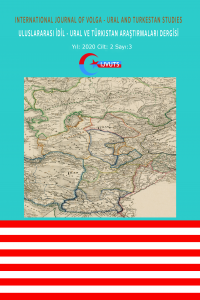ÖZBEK TÜRKÇESİNDE BENZETME BİLDİREN BİÇİMBİRİMLER
Dilin gelişmesi belki de öz olarak benzetme düşüncesinin bir sonucudur. Dildeki soyut anlamlı kelimelerin hemen hepsi bu benzetmenin bir ürünüdür. İlaveten dilbilgisinde kullanılan yan anlam, mecaz anlam, ikinci anlam gibi kavramlar da benzetme düşüncesiyle ilintilidir. Öte yandan gelişmiş dillerde benzetme eylemi beraberinde tahmin, çağrışım, yaklaşıklık, aynılık, karşılaştırma, varsayma, kabul, telakki, görünme, ihtimal, bakış açısı, yorumlama, öngörü gibi düşünceleri de içerir. Dolayısıyla yüzey yapıda benzetme yokmuş gibi görülen cümlelerin bile derin yapısına inildiğinde benzetmenin olduğu görülmektedir.
Dillerde benzetme yaparken somut biçimbirimler kullanılabileceği gibi (şeker gibi adam), söz konusu türden hiçbir biçimbirim bulunmadan da bu durum sağlanabilmektedir (Şekerim, bir gel.).
Bu çalışmamızda Özbek Türkçesinde benzetme amaçlı kullanılan bağımlı veya bağımsız bütün biçimbirimler ele alınacaktır. Bunlar içinde isimler ve bu isimleri türeten ekler, fiiller ve bu fiilleri türeten ekler, edatlar, deyimler vb. Bunlardan birtakım edat ve birtakım isim yapım eklerinin özellikle Farsça, nadiren Arapça kökenli, ayrıca kimilerinin son derece işlek oldukları görülmektedir. Öte yandan Özbek Türkçesinde pekiştirilmiş veya yalın benzetme türleri de sıkça kullanılmaktadır.
Anahtar Kelimeler:
: Özbek Türkçesinde benzetme bildiren kelimeler, Özbek Türkçesinde alıntı biçimbirimler, Özbek Türkçesinde benzetme anlamı katan unsurlar, Özbek Türkçesinde benzetme edatları
MORPHEMES FOR ANALOGY IN UZBEK TURKISH
The development of language is perhaps essentially the result of the idea of analogy. Almost all abstract meaningful words in language are a product of analogies. Likewise, concepts such as connotation, figurative meaning and secondary meaning used in grammar are also related to the idea of analogy. On the other hand, in developed languages, the act of analogy also involves ideas such as estimation, association, approximation, sameness, comparison, assumption, acceptance, assumption, appearance, possibility, point of view, interpretation, prediction. Therefore, it is seen that even sentences that seem to have no analogy in the surface structure have a analogy when the deep structure is analyzed.
An analogy can be made with concrete morphemes in the universal language algorithm. The phrase "man like sugar" is an example of this. But analogies can be made without concrete morphemes: “Sugar, come here.” etc.
In this study, all dependent or independent morphemes used for similes in Uzbek Turkish will be discussed. These can be listed as follows: Nouns and suffixes that derive these nouns, verbs and suffixes that derive these verbs, prepositions, idioms, etc. Some preposition and noun suffixes in these structures are of Persian origin. There are also a few Arabic structures that undertake this task. These foreign-origin structures can be used in a very busy way from place to place. On the other hand, reinforced or simple similes are also frequently used in Uzbek Turkish
Keywords:
MORPHEMES FOR ANALOGY IN UZBEK TURKISH, morphemes of foreign origin in Uzbek Turkish, particles that add analogy meaning in Uzbek Turkish, Prepositions of analogy in Uzbek Turkish,
___
- Abdurahmonov, O‘. (2017). Boysunda tong otdi. Yoshlik Jurnali. Sayı: 5. S. 10-15.
- Adizova, I. (2020).Ustina Radifli G‘azal Takomili Tarixi. Muhammad Riza Ogahiyning O‘zbek Mumtoz Adabiyot Rivojida Tutgan O‘rni mavzuidagi Respublika ilmiy-nazariy anjumani materiallari. Taşkent: Navoiy Universiteti nashriyot matbaa uyi. s.17-24.
- Ahmad, T. (2007) Sharq Javhari Saylanma. Taşkent: Sharq.
- Ali, M. (1990). Sarbardorlar. Şarq Yulduzı, sayı 10, Taşkent, s. 44-120.
- Alimbekov, A. (2000). Turk Adabiyoti Tarixi. Taşkent: Mirzo Ulug‘bek Nomidagi O‘zbekiston Milliy Universiteti.
- ISSN: 2687-3095
- Başlangıç: 2019
- Yayıncı: Gökçe Yükselen PELER
